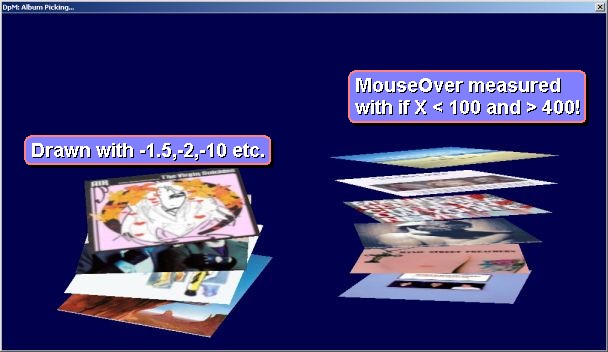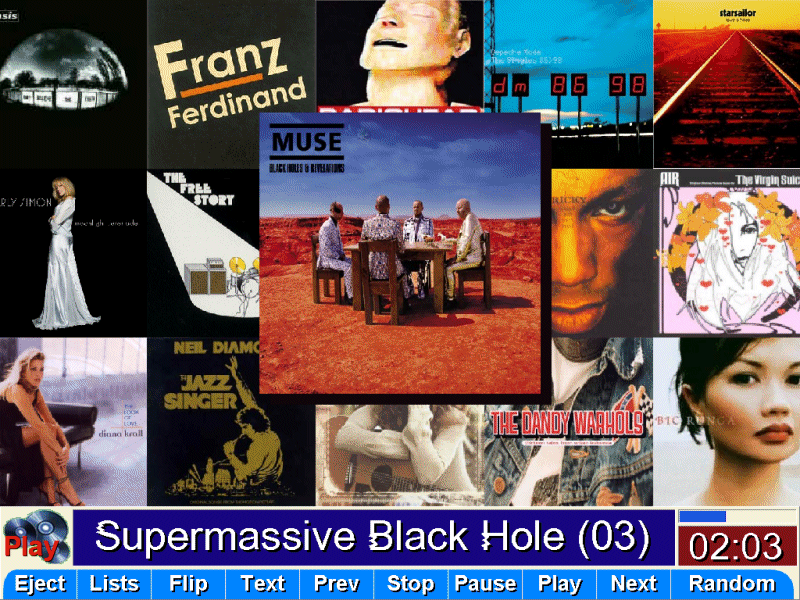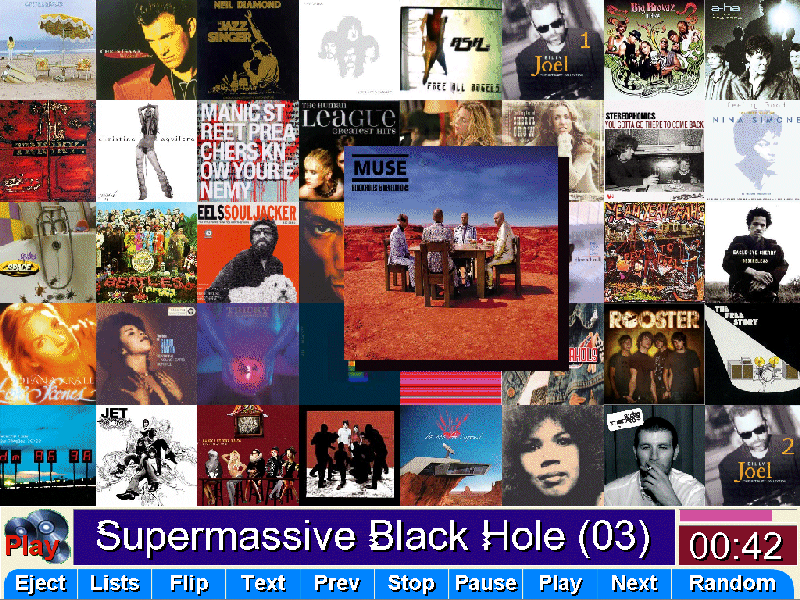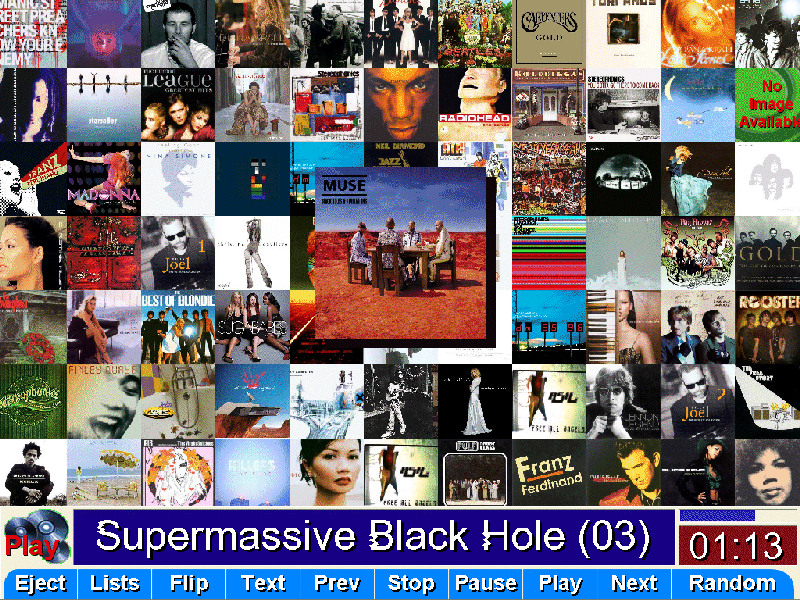Well, I've had good help from here so far and I thought I'd ask a question that's been on my mind since starting with OpenGL. The question is around coordinates and sizing and the fact that they're usually GLFloats and appear to be between small values like -1.0 and 1.0... as I've been coding simple 2D / VCL programs (with limited graphics) for years, I'm obviously much better suited to working in unit of pixels and I'm wondering what's the simplest way to go about this in OpenGL (but not in 2D orthographic - as I've done that already for 2D stuff).
I'm building up a concept of 3D Album Cover picking for addition to my HMusicCentre application so I'm only a little way down the experimental path so far - but I have the drawing working and the picking working. Here I include a link to a .zip file here that contains all the required files to simply compile it in Delphi 7... there's also the small .exe included - here: http://www.hmusiccentre.org.uk/download ... icking.zip - it's only 360K, so if anyone helpful wanted to get hold it and see what I'm doing that'd be great.
Here's how it looks... my Album Covers spin around and wobble a bit, then - when the mouse goes over them - they lean at a shallower angle so that the user can see what they are more clearly - that's the idea anyway. I'm drawing my quads using the GLFloat coordinates, but measuring where my mouse is using Pixels - not a great idea I am sure.

At the moment, I'm displaying my OpenGL stuff directly to a TForm that is around 1000 x 600 pixels in size, and I'm setting up OpenGL with the following code...
Code:
- DC := GetDC (Handle);
- SetupPixelFormat (DC);
- RC := wglCreateContext (DC);
- wglMakeCurrent (DC,RC);
- glMatrixMode (GL_PROJECTION);
- glFrustum (-0.1,0.1,-0.1,0.1,0.3,25.0);
- glMatrixMode (GL_MODELVIEW);
- glEnable (GL_DEPTH_TEST);
- glDepthFunc (GL_LESS);
- glHint (GL_PERSPECTIVE_CORRECTION_HINT,GL_NICEST);
- glEnable (GL_TEXTURE_2D);
Code:
- DSquare (1,-1.5,-2,-10,-Flipper1,AlbumCoverSize,Lean1);
So, when I used the 2D orthographic mode, I used:
Code:
- glOrtho (0,pOGL.Width,0,pOGL.Height,-10,10);
- glMatrixMode (GL_MODELVIEW);
Something like:
Code:
- glViewport (0,0,Form1.Width,Form1.Height);
- glMatrixMode (GL_PROJECTION);
- glLoadIdentity;
- gluPerspective (45.0,Form1.Width / Form1.Height,0.1,100.0);
- glMatrixMode (GL_MODELVIEW);
- glLoadIdentity;
P.S. I understand that different coordinates systems are used by these technologies as well... with 1,1 being top-left in Delphi and 1,1 being bottom-left in OpenGL... I think!


